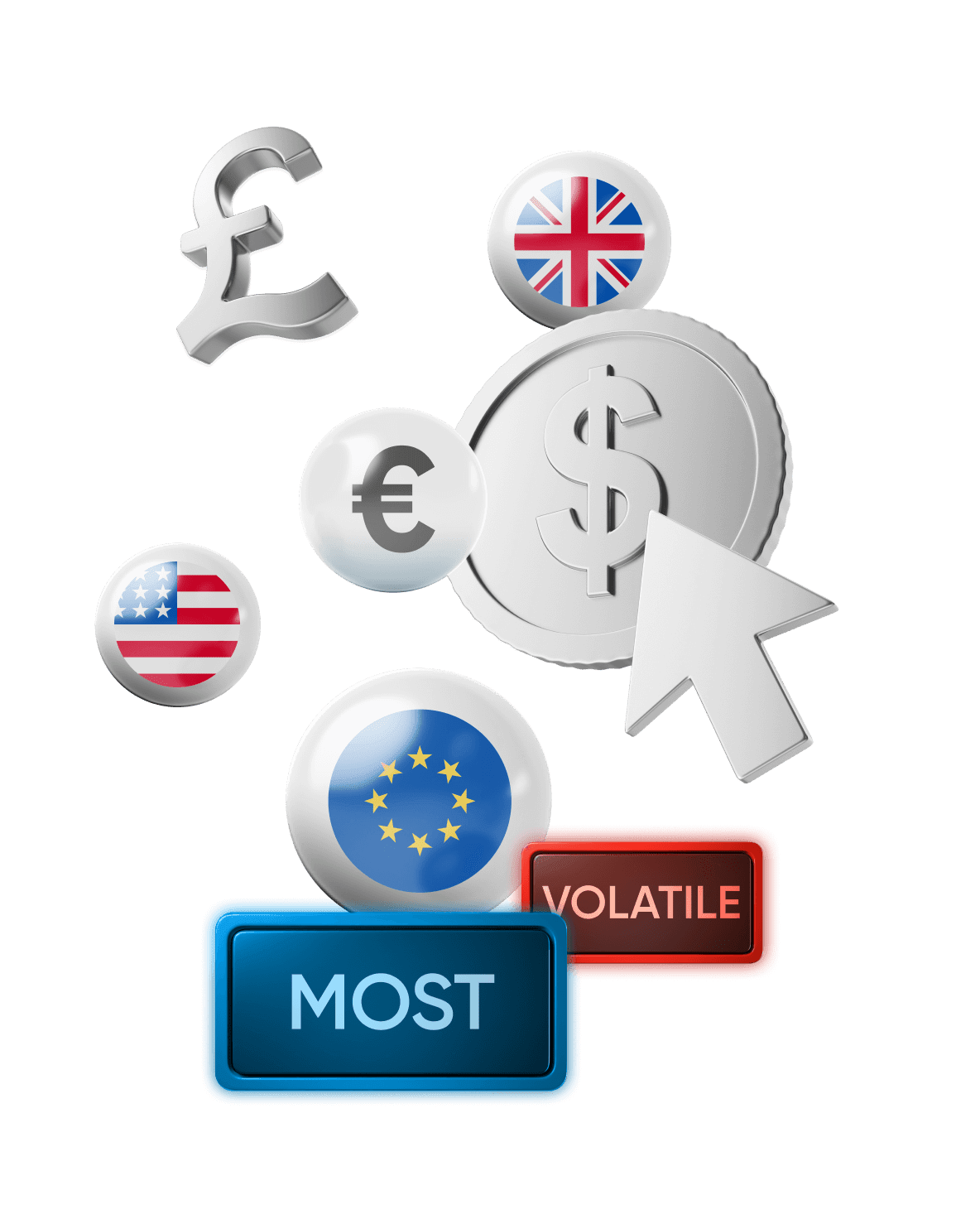Discover more about forex volatility and learn about the most volatile currency pairs available to trade popular CFDs forex pairs.

Volatility refers to the magnitude of price movement for a given market over a set period of time. Volatility in forex can present potential opportunities for currency traders, as large moves provide scope for proportionately large profits. However, by the same token, such conditions represent a significant risk of losing capital as positions can turn against you quickly.
Forex volatility can be measured in a range of ways, including historical volatility, calculated as standard deviation of returns over a chosen timeframe. Implied volatility also can be used, where expectation of future volatility is calculated using options pricing models. On the technical indicator front, the average true range, or ATR, measures market volatility by calculating the range between a currency’s high and low prices over a given period. Bollinger Bands® can also be used where the size of the ‘band’, derived from a moving average, can give information about volatility based on the width of the bands.
Market volatility in forex, as well as other asset classes, can be caused by a range of macroeconomic events. For example, if an interest-rate decision is announced that’s different from market expectations, the price of forex pairs can see rapid movement as holding certain currencies becomes more or less attractive. Also, on a technical level, price breaching key points of support and resistance can inspire widespread buy or sell decisions. Market sentiment, low liquidity periods and speculative trading by institutions can also influence volatility levels.
Margin trading, or leveraged trading, is when traders have exposure to larger positions than the size of their initial deposit. This means they can profit more than the amount they put down, but also may lose more in unfavourable market conditions. When margin trading, you only have to put down a small percentage of the total value of the position, (known as the margin itself). If your position goes against you, you may receive a margin call, meaning the equity in your account has fallen below the minimum required. That means you’ll need to deposit more or reduce your sizing to continue with the trade.